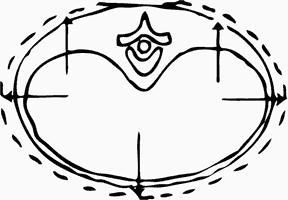During the exercise “belly breathing” (“abdominal breathing”), the diaphragm contracts as you inhale. While doing this, make sure that your chest is relaxed. This inhalation causes the lower abdomen to expand in all directions. That is why the exercise is called “abdominal breathing”.
When your lungs are filled with air, begin to exhale slowly. At the same time, using a minimum of physical effort, contract your stomach and at the same time relax your diaphragm.

“Belly breathing” is very effective, this is how small children breathe. By performing this exercise, you not only enrich the body with oxygen, but also massage the internal organs with minor physical effort. With age, breathing becomes more shallow, so this exercise will help restore full, deep breathing.
1. As you exhale, pull your belly and stomach toward your spine.
2. The chest is relaxed and lowered. Avoid physical stress. You should feel some flattening of the chest.
3. Inhale slowly through your nose. As you inhale, keep your chest and stomach flat.
4. Fill your lungs with air. Try to let the air fill the diaphragm, feel how it expands.
5. The abdomen expands like an inflated ball in all directions (not just forward). The chest and abdomen above the navel practically do not expand.
6. At the peak of inhalation, begin a slow, smooth exhalation, contracting your stomach through light physical effort and relaxing the diaphragm.
7. Both inhalation and exhalation should be smooth, as silent as possible and identical
by duration. As soon as the breathing becomes barely noticeable, we can talk about undoubted success.
8. Start the exercise with three breaths. If your health allows, perform the exercise nine or more times.




